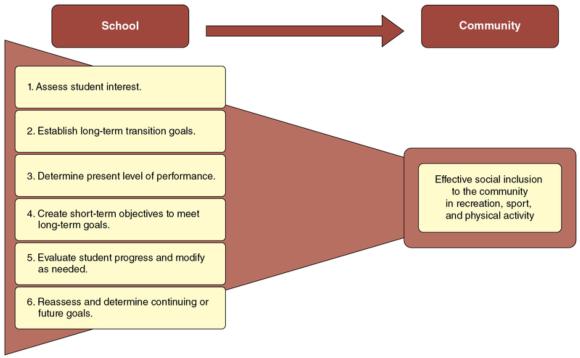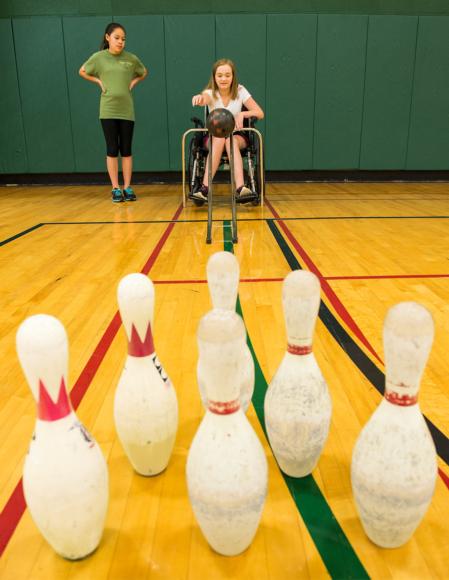Functional Approach in Transition Planning
This is an excerpt from Strategies for Inclusion With Web Resource 3rd Edition by Lauren J Lieberman,Cathy Houston-Wilson.
The functional approach in transition planning is used to create appropriate goals in physical education. This model is based off the work of Flexer et al. (2013) and incorporates legal requirements and best practices in special education. When creating transition goals, consider the following:
- The student's needs, interests, and preferences
- How achievement will be measured
- Coordinated activities that can be included
- How the goals promote movement from school to community
Figure 8.1 provides the steps for creating a transition program in physical education. Through this process, you can assist students with disabilities in preparing for healthy, active lives in the community. Figure 8.2 provides an example of a suggested ITP in adapted physical education that aligns with the six steps presented in figure 8.1.

Figure 8.1 Functional approach to transition planning.
Step 1: Assess student interest.
- Determine the availability of programs, services, and facilities related to sport, recreation, and physical activities in the community.
- Ask students about their interests in sport, recreation, and physical activities (provide various options and examples to assist students in the assessment process).
- Ask parents about the interests and goals they have for the child regarding sport, recreation, and physical activities.
Step 2: Establish long-term transition goals.
- Based on the information obtained in step 1, develop long-term goals related to desired outcomes.
- Share the long-term goals with the student and family.
- If necessary, adjust goals based on feedback.
Step 3: Determine present level of performance.
- Determine the student's current level of function related to the desired outcomes.
- Evaluate the skill set needed in relation to the environment, the task, and the unique attributes of the student.
Step 4: Create short-term objectives to meet long-term goals.
- Identify sequential steps needed to achieve long-term goals.
- Readjust as necessary along the way (e.g., if the goals are too easy or too challenging).
Step 5: Evaluate student progress and modify as needed.
- Assess the student's abilities.
- If student achievement is below the established goal, modify activities to promote opportunities for success.
Step 6: Reassess and determine continuing or future goals.
- Reassess the student's performance at the end of the academic year and compare it to long-term goals.
- Identify areas that need further development.
- Identify future long-term goals if possible.

This student is learning the prerequisite skills for bowling in the community.

Learn more about Strategies for Inclusion With Web Resource, Third Edition.
More Excerpts From Strategies for Inclusion With Web Resource 3rd EditionSHOP

Get the latest insights with regular newsletters, plus periodic product information and special insider offers.
JOIN NOW


